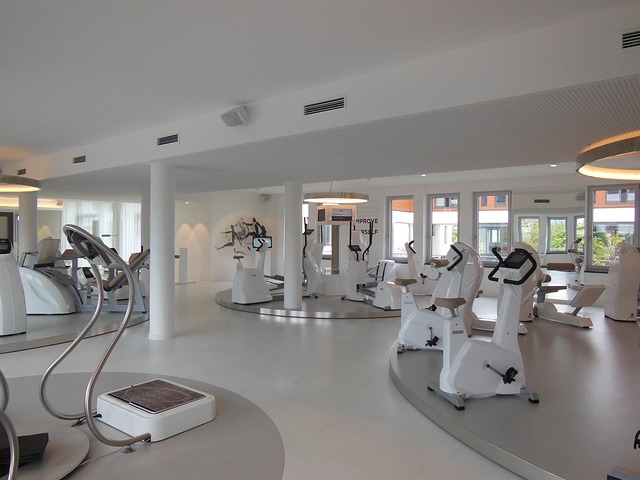Modern lifestyles often put our bodies in a state of rest most of the day. Long periods of sitting, screen time, and a reliance on automated transportation can slow down the metabolic machinery that keeps us energized. Metabolism, the collection of chemical reactions that converts food into energy, is not just a static rate set by genetics; it is highly responsive to our daily habits. By introducing simple, intentional movement into the routine, you can activate metabolic pathways, increase calorie expenditure, and support overall health.
The Science Behind Metabolism and Movement
Metabolic rate can be divided into three components: basal metabolic rate (BMR), the energy required for basic bodily functions; thermic effect of food (TEF), the energy used to digest and process nutrients; and activity‑related energy expenditure (AEE), the calories burned during physical activity. While BMR and TEF are largely fixed, AEE is where lifestyle changes make the biggest difference. Even light activities—walking, standing, or gentle stretching—raise AEE enough to create a daily caloric surplus that, over time, supports weight maintenance or loss.
- Cardio vs. Strength: Both contribute to a higher metabolic rate, but strength training has the added benefit of increasing lean muscle mass, which in turn elevates BMR.
- Frequency: Consistency matters more than intensity for metabolic health. Small, regular bouts of movement accumulate to significant benefits.
- Recovery: Adequate sleep and stress management improve hormonal balance, which regulates metabolism.
Practical Movement Hacks for Everyday Life
Embedding movement into daily routines does not require a gym membership or a marathon. Below are actionable habits that can be adapted to any schedule:
- Stand While You Work: Use a sit‑stand desk or place a small footrest to shift weight. Even standing for 10 minutes a hour can increase energy expenditure by 10–20 calories.
- Micro‑Workouts: Three sets of 10 squats, 10 lunges, and 10 arm circles during the morning coffee break.
- Active Commute: If possible, walk or bike to work for a few minutes at the start and end of the day.
- Walk Meetings: Suggest walking meetings or take a short stroll while brainstorming.
- Stretch After Screens: After every 30 minutes of computer use, stretch arms, neck, and hips to improve circulation.
“Movement is a medicine. Small changes, when repeated daily, can transform metabolic health.” – Dr. Elena Ruiz, Metabolic Researcher
Nutrition and Metabolism: The Dynamic Duo
Movement alone is powerful, but pairing it with mindful nutrition amplifies the metabolic response. The right foods can fuel movement and accelerate calorie burning, while the wrong choices can hinder metabolic efficiency.
- Protein Intake: Adequate protein supports muscle synthesis, which in turn increases BMR. Aim for 0.8–1 gram of protein per kilogram of body weight daily.
- Whole Grains vs. Refined Carbs: Whole grains provide sustained energy, whereas refined carbs can cause rapid blood sugar spikes followed by crashes that sap motivation for movement.
- Healthy Fats: Omega‑3 fatty acids help reduce inflammation, improving muscle recovery and metabolic flexibility.
- Hydration: Even mild dehydration can lower metabolic rate. Drinking water before meals can also aid digestion and TEF.
When combined, regular movement and balanced nutrition create a virtuous cycle: movement burns calories and builds muscle; muscle tissue consumes more energy at rest; nutritious foods provide the substrates necessary for both processes.
Sample Day of Movement and Nutrition
Below is a realistic outline that can be tweaked to fit individual preferences and schedules:
- Morning (6:30 am) – 10 minutes of brisk walking, followed by a protein‑rich smoothie (Greek yogurt, berries, spinach, and a scoop of whey). Start the day with a short bodyweight circuit (10 squats, 10 push‑ups, 10 sit‑ups).
- Mid‑Morning (9:00 am) – Stand while answering emails; every hour take a 5‑minute stretch break.
- Lunch (12:00 pm) – A balanced plate: lean chicken breast, quinoa, mixed vegetables, and a drizzle of olive oil. Take a 15‑minute walk afterward.
- Afternoon (3:00 pm) – 10 minutes of desk yoga, followed by a handful of almonds and a piece of fruit for a post‑lunch energy boost.
- Evening (6:30 pm) – Light cardio (cycling or jogging) for 20 minutes, then a protein‑centric dinner (salmon, sweet potato, asparagus). Finish with a 5‑minute calming stretch before bedtime.
Tracking Progress Without Tech Overload
While wearable devices can provide data on steps and heart rate, simple paper logs or basic phone reminders can also be effective. Record:
- Daily activity minutes and type of movement.
- Meals with focus on protein, fiber, and healthy fats.
- Sleep hours and quality.
- Mood and energy levels.
Review these logs weekly. Notice patterns: Are there times when movement is low? Are you skipping nutrient‑dense foods? Adjust accordingly to keep metabolism humming.
Common Misconceptions About Metabolism
Understanding what does and does not influence metabolic rate helps prevent frustration:
- “You’re born with a fixed metabolic rate.” – While genetics set a baseline, lifestyle choices can shift that baseline significantly.
- “Skipping meals speeds up weight loss.” – Fasting may temporarily lower calorie intake but can also reduce BMR, leading to a slower metabolism over time.
- “Only intense workouts affect metabolism.” – Moderate, frequent movement is often more sustainable and can produce comparable benefits in calorie expenditure.
- “Metabolism stops declining after a certain age.” – Age is a factor, but muscle preservation, sleep, and nutrition can mitigate its effects.
Maintaining Momentum: Tips for Long‑Term Success
Creating lasting habits involves more than setting a schedule. Consider these strategies:
- Set Micro‑Goals: Instead of aiming for “exercise daily,” start with “stand for 2 minutes every hour.” Achievable targets build confidence.
- Reward Yourself: Celebrate milestones with non‑food rewards, such as a new workout playlist or a relaxing bath.
- Social Support: Share your goals with a friend or family member who can hold you accountable.
- Mindful Observation: Notice how movement affects mood, sleep, and digestion. Positive feedback loops reinforce behavior.
Final Thoughts: The Everyday Metabolism Boost
Metabolism is not an abstract, untouchable concept; it is a dynamic system that responds to the rhythms of daily life. By weaving simple movement habits into the fabric of your day—standing, walking, stretching—and pairing them with balanced nutrition, you give your metabolic engine a healthy spark. The changes may be subtle at first, but consistency turns them into powerful, lasting shifts in energy, weight management, and overall well-being. Start today, and let the cumulative effect of small, intentional movements transform your metabolic health.




